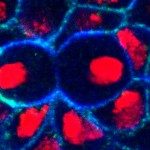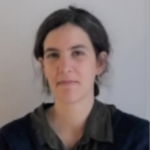Link to Pubmed [PMID] – 24139805
Link to DOI – 10.1016/j.celrep.2013.09.019
Cell Rep 2013 Nov; 5(3): 601-10
Biased DNA segregation is a mitotic event in which the chromatids carrying the original template DNA strands and those carrying the template copies are not segregated randomly into the two daughter cells. Biased segregation has been observed in several cell types, but not in human mesenchymal stem cells (hMSCs), and the factors affecting this bias have yet to be identified. Here, we have investigated cell adhesion geometries as a potential parameter by plating hMSCs from healthy donors on fibronectin-coated micropatterns. On symmetric micropatterns, the segregation of sister chromatids to the daughter cells appeared random. In contrast, on asymmetric micropatterns, the segregation was biased. This sensitivity to asymmetric extracellular cues was reproducible in cells from all donors but was not observed in human skin-derived fibroblasts or in a fibroblastic cell line used as controls. We conclude that the asymmetry of cell adhesion is a major factor in the regulation of biased DNA segregation in hMSCs.

